
© Erik Tomasson. (Click image for larger version)
San Francisco Ballet
2014 Opening Night Gala: Giselle – Act I pas de cinq, Talk to Her, Lambarena solo, Who Cares? – The Man I Love, Variations for Two Couples, Diana and Acteon – pas de deux, Manon – Act I bedroom pas de deux, Les Lutins, Concerto – pas de deux, Grand Pas Classique, Finding Light, Brahms-Schoenberg Quartet – 4th movement
San Francisco, War Memorial Opera House
22 January 2014
www.sfballet.org
One appealing aspect of galas is that the audience is at least as entertaining as the dancers. The high society of this foggy city shows up in their tuxedos and heavily encrusted designer gowns, preening and strutting, demanding to be taken seriously in their efforts at mimicking royalty. In the ladies’ room I can’t even reach the sinks, as at least half a dozen of these princesses were smoothing their hair, adjusting their attire and admiring themselves in the wall of mirrors above the faucets. The din in the lobby is so overwhelming that no one seems to have heard the warning bell to take their seats. They continue photographing each other with their phones, oblivious to the fact that the real performance is about to begin.
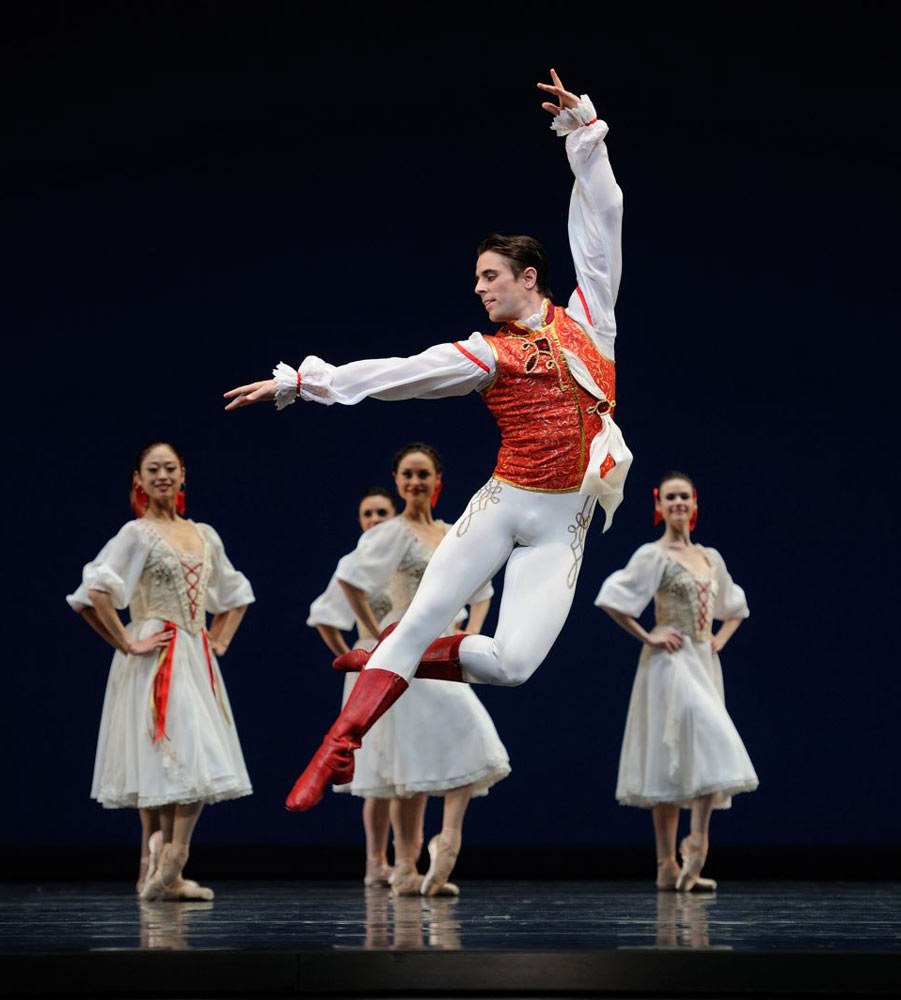
© Erik Tomasson. (Click image for larger version)
Fortunately the selections for this event are more interesting than the usual gala fare, and items from the upcoming season neatly bookend the evening. Opening the show, after the obligatory “Star-spangled Banner” and welcoming remarks and acknowledgment of donors and volunteers, is the pas de cinq from the first act of Giselle. I have never liked artistic director Helgi Tomasson’s choreography of his replacement for the traditional Peasant pas de deux, even though he uses the same music. There just isn’t sufficient time to give everyone enough dancing. A pas de trois would have been fine, but here there seems to be a couple of extra wheels. Even worse, all the dancers exit, leaving a very barren stage when the men, the very fine Daniel Deivison-Oliviera and Hansuke Yamamoto, and a sloppy-footed Sasha de Sola do their solos.
Yuri Possokhov’s Talk to Her is the perfect vehicle for the hot-blooded real-life partners Lorena Feijoo and Vitor Luiz. To Alberto Iglesias’s music from Almodovar’s film of the same title, these two create a spontaneous combustion of a new magnitude that has the audience in a roaring explosion of applause. I had hoped that Frances Chung would bring some heat to Val Caniparoli’s solo from Lambarena, a fusion of ballet and traditional African dance. She smiles and executes the steps beautifully, but the earthiness and sensuality that would make it memorable are still undeveloped.
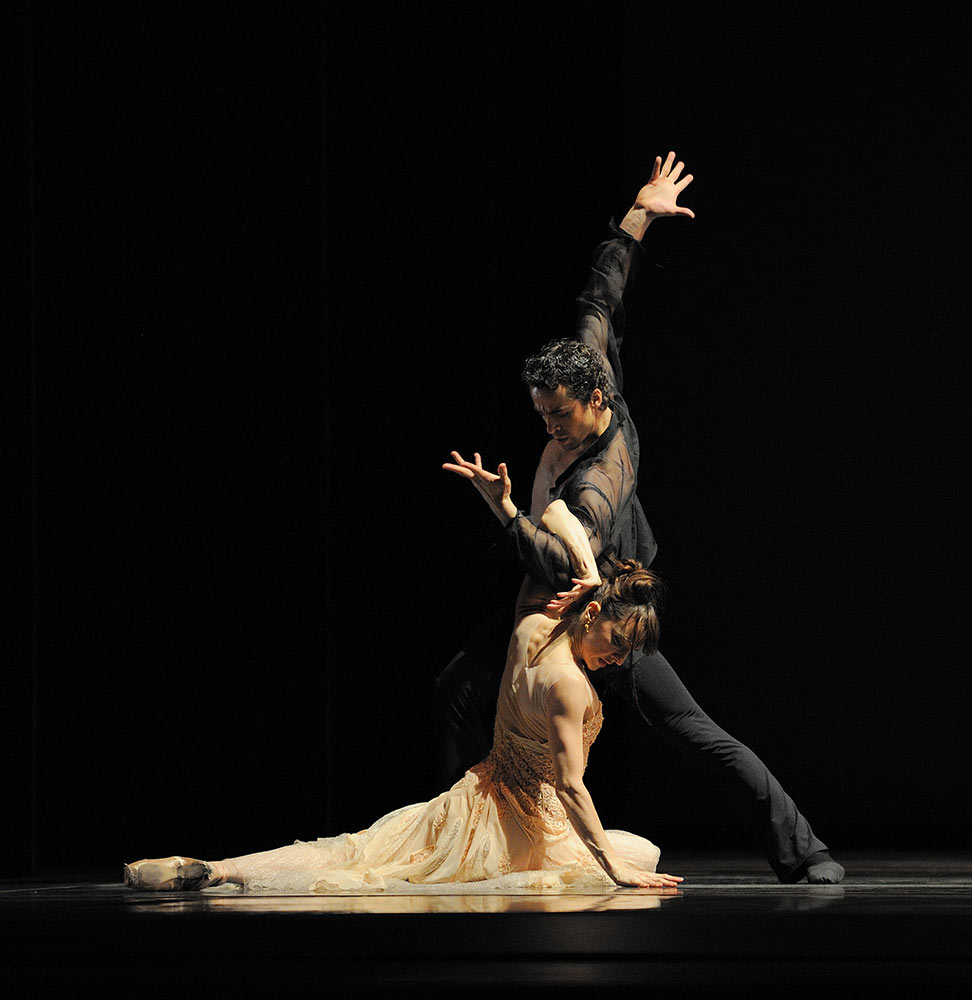
© Erik Tomasson. (Click image for larger version)
Simone Messmer, a recent transplant from American Ballet Theatre, and Rubén Martín Cíntas are lovely in “The Man I Love” from Balanchine’s Who Cares? The cuteness factor in the choreography doesn’t make it easy for the dancers to do more than succumb to clichés as they try to achieve more depth. I’m looking forward to seeing Messmer in other roles.
The best all-round piece of the evening is Hans van Manen’s Variations for Two Couples, from the exquisitely concise choreography by this still-relevant master, which premiered in Amsterdam in 2012, to the dancers – Sofiane Sylve, Sarah Van Patten, Luke Ingham and Anthony Spaulding, who brought their considerable interpretive and technical skills to illuminate it.
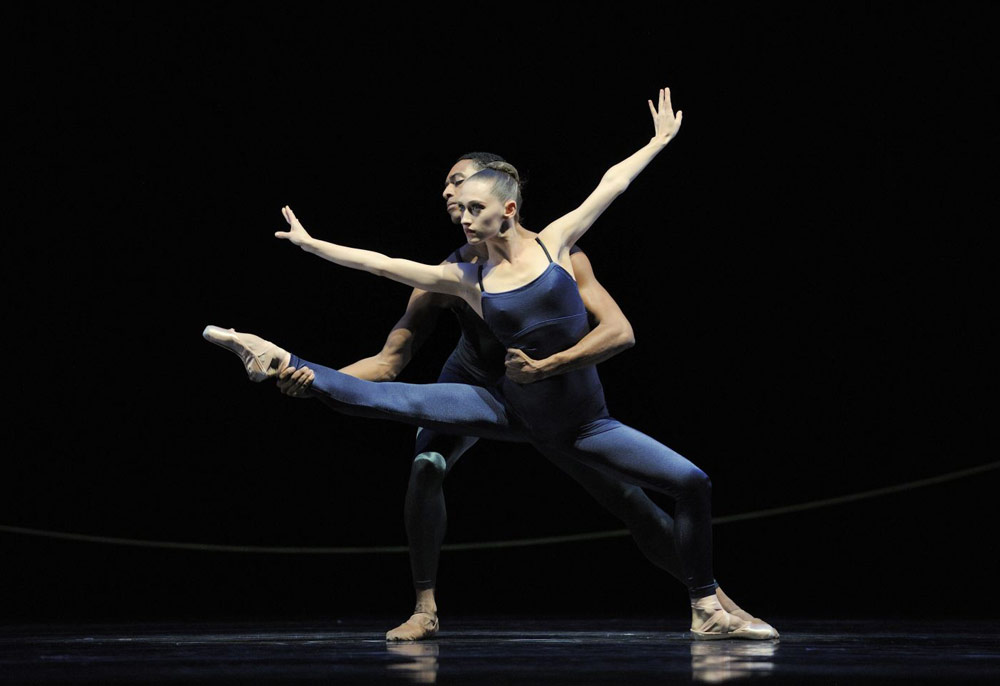
© Erik Tomasson. (Click image for larger version)
The Diana and Acteon pas de deux starts with Vanessa Zahorian hitting a slippery patch of stage in her entrance and taking a nasty fall. She springs to her feet and carries on with surprising aplomb, while Taras Domitro astounds with his intricate jumps, dazzling tours en l’air and effortless pirouettes.
After the intermission, the number of empty seats is indicative of the true interest of some of the audience, but it’s their loss. Maria Kochetkova partners with guest artist Johan Kobborg, formerly with the Royal Danish Ballet and the Royal Ballet, in MacMillan’s bedroom pas de deux from the first act of Manon. The two are well-suited to each other and capture the necessary passion. Next we see Kobborg’s work as a choreographer in Les Lutins, a light-hearted competition between three dancers and a violinist. Gennadi Nedvigin brilliantly employs flashing feet in a rhythmic challenge with Kurt Nikkanen on violin. Esteban Hernandez joins in the fun, soon followed by Dores Andre to complete a definite crowd-pleaser.
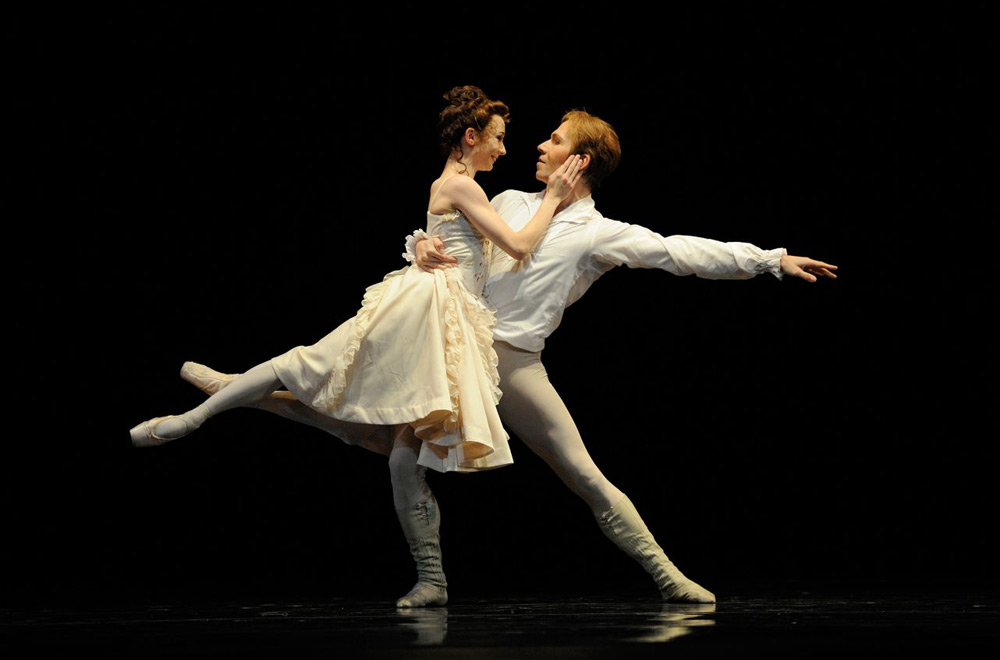
© Erik Tomasson. (Click image for larger version)
The pas de deux from MacMillan’s Concerto shows a modern facet of his work. Ms. Van Patten and Tiit Helimets, against three shadowing couples, are fine, but this piece is not very exciting. Grand Pas Classique fares better with Mathilde Froustey and Davit Karapetyan. She is charming and holds her balances very well and he is a perfect danseur noble, with regal presence and his usual impeccable technique.
Yuan Yuan Tan and Damian Smith have been dancing together for more than a decade and have developed that exquisite sense of intuitively feeling each other’s every move and nuance. In Finding Light by Edwaard Liang, they are sublime. Unfortunately, the choreography has little to offer in terms of originality or astute craft.

© Erik Tomasson. (Click image for larger version)
Balanchine’s Brahms-Schoenberg Quartet gives Ms. Sylve and Mr. Ingham the opportunity to show a side quite the opposite from the one they offered in the Van Manen ballet earlier in the evening. Against a full corps de ballet, they revel in this folkloric pastiche and we can all go home feeling lighter.













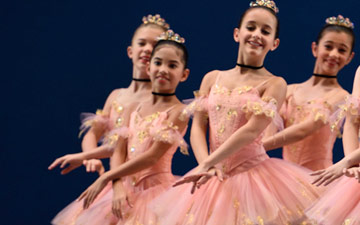



You must be logged in to post a comment.